
Overview
You might be wondering how to create a clear description of a process. Well, it all starts with five essential steps:
- Identifying the process
- Gathering detailed information
- Organizing that information
- Reviewing your documentation
- Refining your documentation
Sounds simple, right? But here’s the kicker: structured documentation can really boost your communication, operational efficiency, and even help with employee onboarding. By focusing on effective record-keeping, organizations can unlock significant productivity gains and save on costs. So, why not dive into these steps and see how they can work for you?
Key Highlights:
- Process documentation creates clear structures of tasks, roles, and responsibilities, improving communication and compliance.
- Companies like ATS Industrial Automation and Lockheed Martin achieved significant productivity gains and cost savings through effective record-keeping.
- Documenting processes helps identify inefficiencies and fosters a culture of transparency and accountability.
- Involving team members in documentation can reveal valuable insights and enhance onboarding experiences.
- Gathering detailed information about processes involves interviews, observations, and reviewing existing documentation.
- Organising information into clear formats, such as flowcharts and checklists, improves usability and clarity.
- Reviewing and refining process descriptions with stakeholder feedback ensures accuracy and relevance.
- Inefficient documentation can lead to significant productivity losses, highlighting the need for ongoing improvements.
Introduction
You might be wondering why creating a clear description of a process is so crucial for organizations aiming to boost efficiency and productivity. Well, well-documented processes not only clarify roles and responsibilities but also set the stage for smoother operations and better training for new employees. But here’s the kicker: many organizations struggle to keep their documentation up to date. So, how can teams tackle these challenges and truly unlock the full potential of their process descriptions? Let’s dive into that!
Understand the Importance of Process Documentation
You might be wondering why the description of a process related to documentation is such a big deal for organizations looking to streamline operations and boost productivity. Well, it’s all about creating a clear structure of tasks, roles, and responsibilities that keeps everyone on the same page. By carefully recording procedures, teams can create a clear description of a process that helps cut down on misunderstandings, improve compliance, and make training new employees a breeze.
Now, let’s dive into the description of a process that illustrates how well-organized records can actually help organizations identify inefficiencies and make effective changes. For instance, take ATS Industrial Automation—they’ve seen considerable productivity increases, slashing downtime by 60% thanks to enhanced workflow records. And then there's Lockheed Martin, which saved nearly $1 million in material investments through efficient record-keeping methods. That’s some serious financial advantage right there!
But it doesn’t stop there. The energy management system at Electric Boat Corporation managed to lower steam expenses by 51% and total energy usage by 10%. These examples really show how a description of a process can enhance operational efficiency. Fundamentally, these records provide a description of a process that fosters a culture of transparency and accountability, guiding organizations toward operational excellence.
However, let’s be real—keeping up with effective documentation can be tricky. Many entities struggle with ensuring updates and accessibility, and tackling these challenges is key to unlocking all those benefits. So, what are your thoughts on this? Have you faced similar documentation hurdles in your organization?
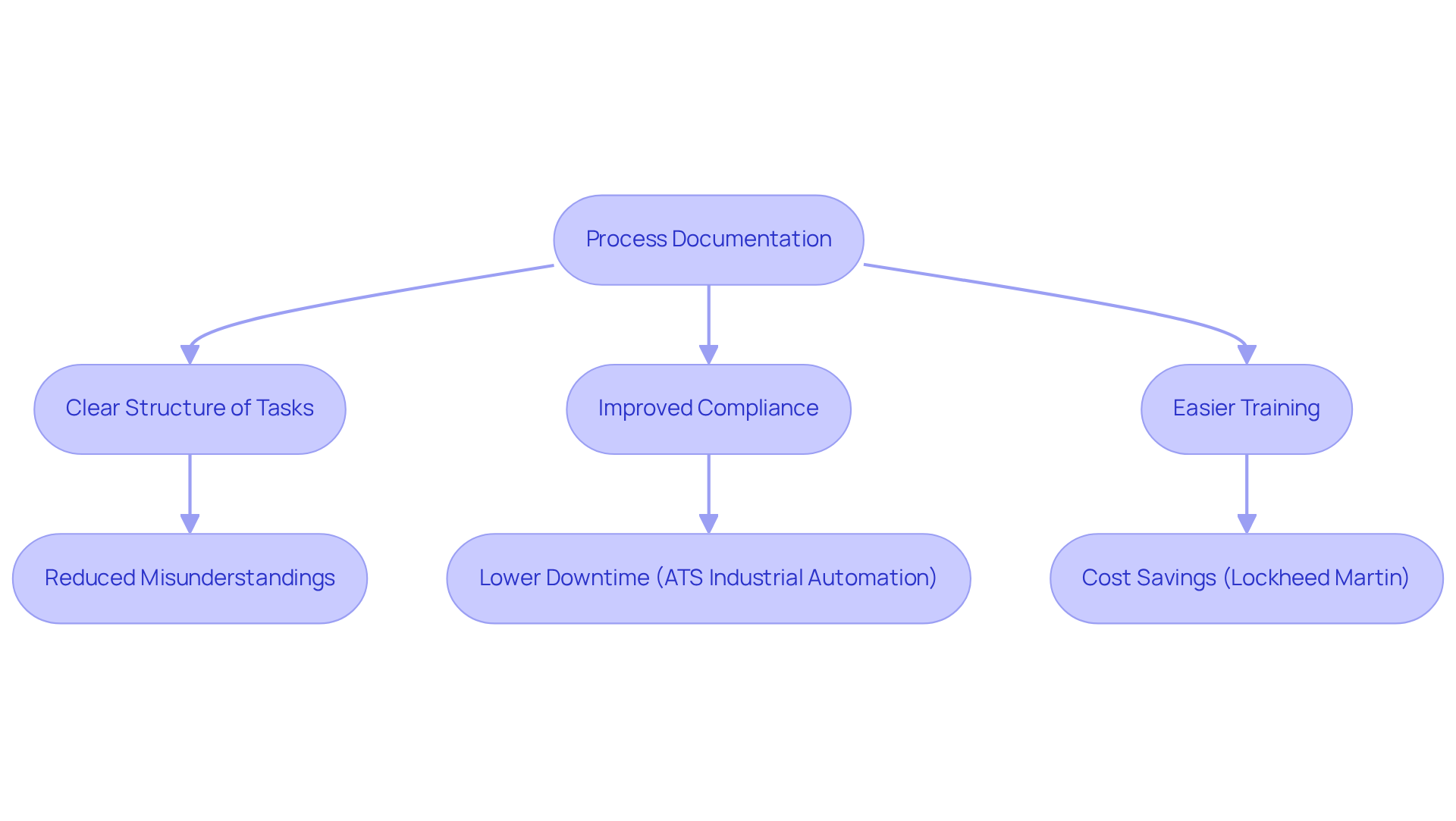
Identify the Process to Document
You might be wondering how to effectively write a description of a process in your organization. Start by pinpointing the most critical operations. Think about factors like how often these tasks are performed, their complexity, and how they impact overall performance.
It’s super important to involve your team in this process; their insights can reveal methods that might be misunderstood or prone to errors. For instance, did you know that 81% of newcomers feel overwhelmed with information during onboarding? By providing a description of a process for the onboarding procedure, you can really boost efficiency, cut down training time, and enhance the experience for new hires.
Grace Lau, the Director of Growth Content, puts it well: "employee onboarding is critical in a new hire’s decision to stay with or leave a company." So, make sure the method you choose aligns with your organizational goals and tackles any current challenges. This alignment is key to maximizing the benefits of your record-keeping efforts.
Plus, consider the financial impact of poor onboarding; replacing an employee can cost up to four times their annual salary. That really underscores the importance of thorough documentation!
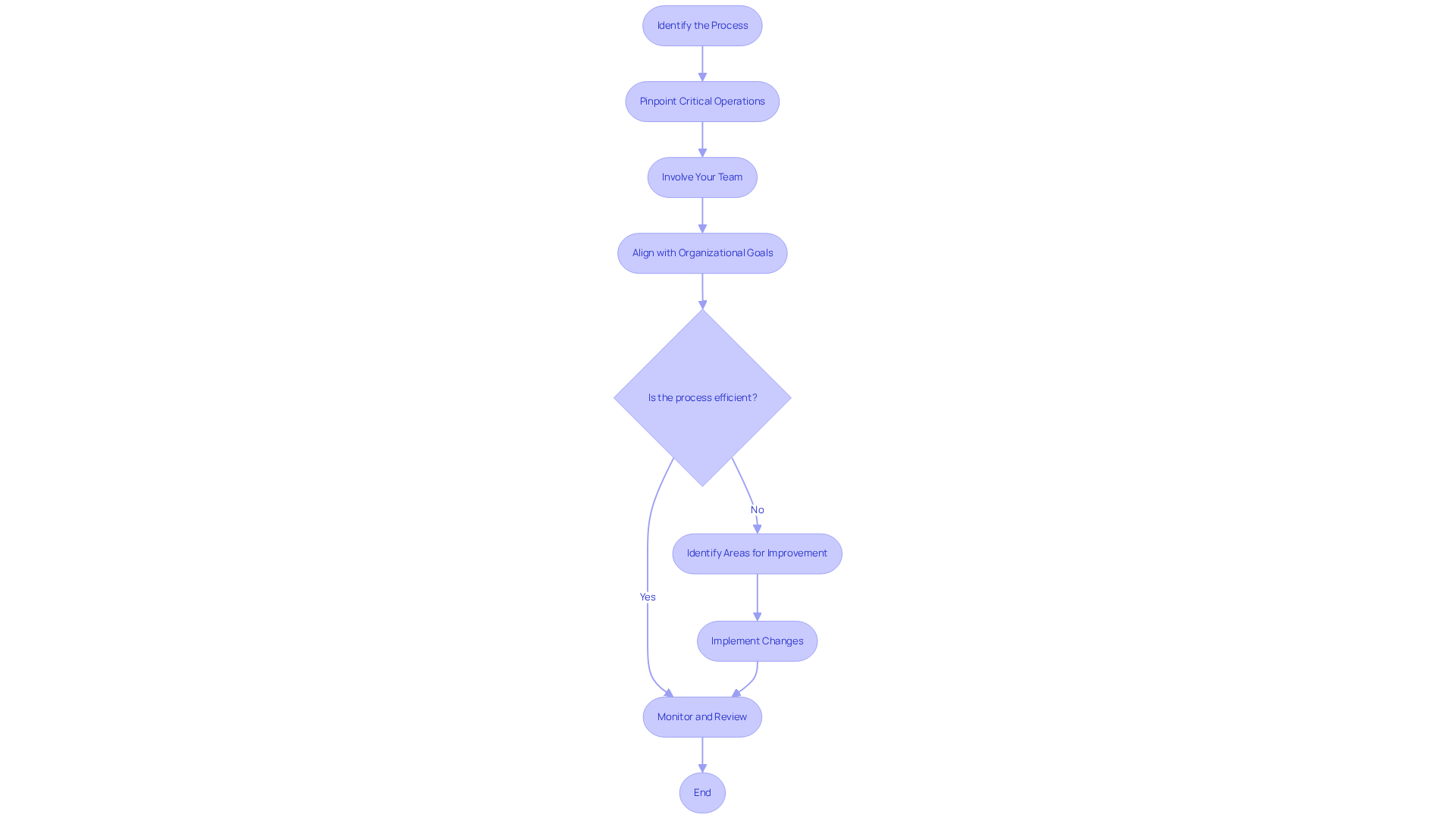
Gather Detailed Information About the Process
Once you’ve recognized the procedure, you might be wondering what’s next. The next step is to gather all the information you can about it. There are plenty of ways to do this! You can:
- Interview team members involved in the activity
- Observe it in action
- Review any existing documentation
A handy checklist can help you collect essential details, including:
- Document information (such as title, version number, creation date, last update date, and author details)
- An overview of the procedure
- Roles
- Tools used
- A description of a process
For instance, if you're documenting a customer service process, gather insights on how inquiries are received, processed, and resolved. This thorough data gathering will serve as a description of a process that lays a solid foundation for your records, ensuring they are both precise and useful. Engaging with team members through interviews is especially crucial—it’s a great way to capture practical insights and experiences that might not be documented anywhere else. This collaborative approach enhances the description of a process, deepening your understanding of the workflow and leading to clearer and more efficient records.
Speaking of tools, have you tried SowFlow's Chrome extension? It can make recording quick and easy, streamlining the process of capturing and sharing vital information. Ultimately, when you gather comprehensive data, you’re not just improving the usability of your final product; you’re also creating a more organized and scalable documentation system. So, let’s dive into how you can make this process even smoother!
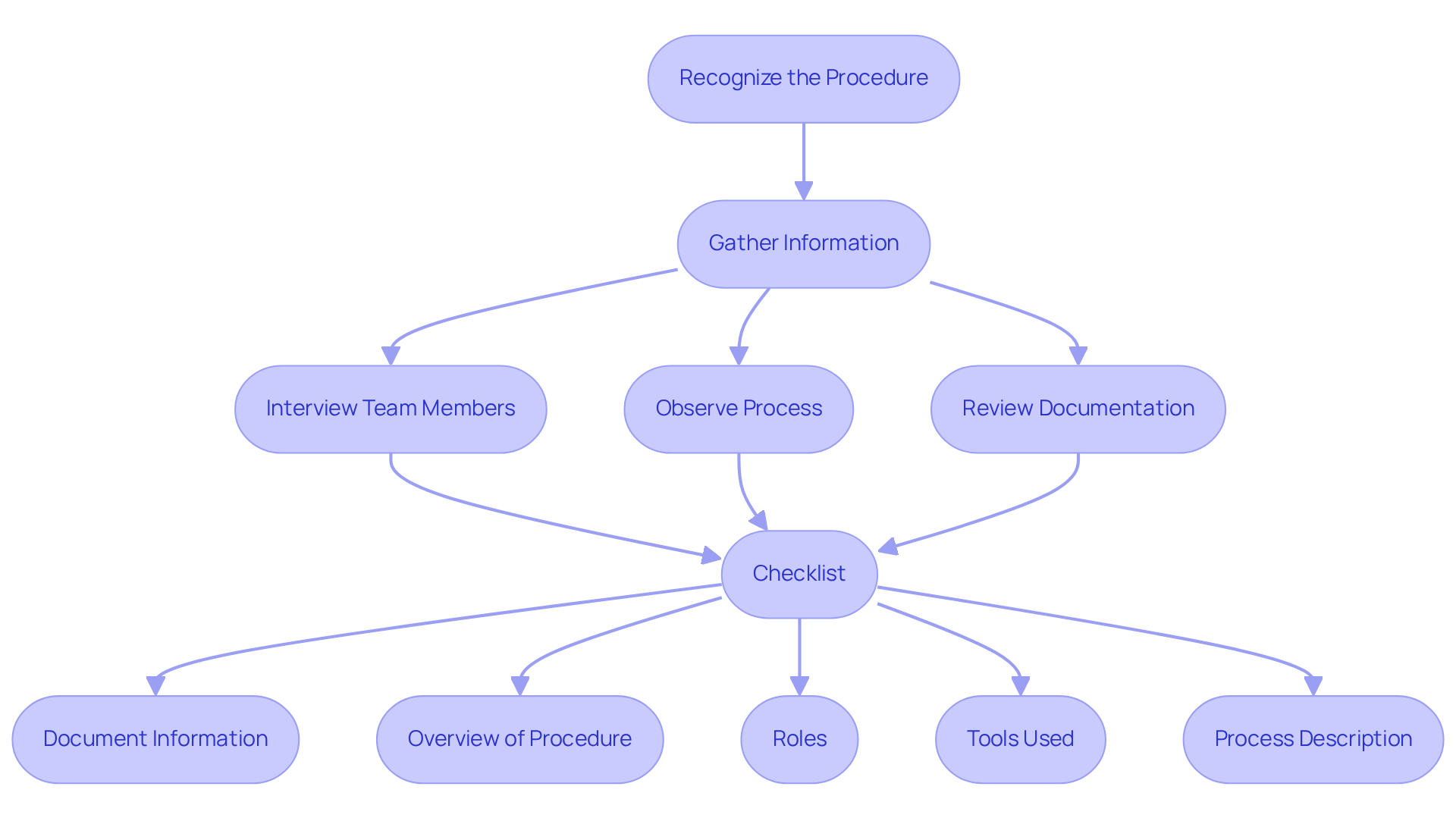
Organize the Information into a Clear Format
Once you've gathered all the necessary information, what’s next? It’s time to structure it into a clear and logical format. Start by creating a description of a process that outlines the procedure steps in order, ensuring each one is straightforward and easy to follow. You might find that using templates or flowcharts really helps; they visually illustrate the workflow, making those intricate methods a lot easier to digest. Flowcharts are super handy and probably the most popular way to map things out. They can effectively show each phase of a workflow, like documenting a sales process from lead generation to closing the deal.
Now, let’s talk about checklists or bullet points. These can really highlight critical tasks and responsibilities, making your documentation not just easier to read but also actionable. It’s also crucial to identify inputs and outputs to ensure everyone knows what resources are needed and what results to expect. And if you're dealing with multi-team workflows, swimlane diagrams can be a lifesaver. They clarify roles, helping team members perform their tasks effectively. This organized approach not only boosts clarity but also acts as a description of a process that supports a more structured and scalable operation.
So, how do you think your documentation could benefit from these strategies?
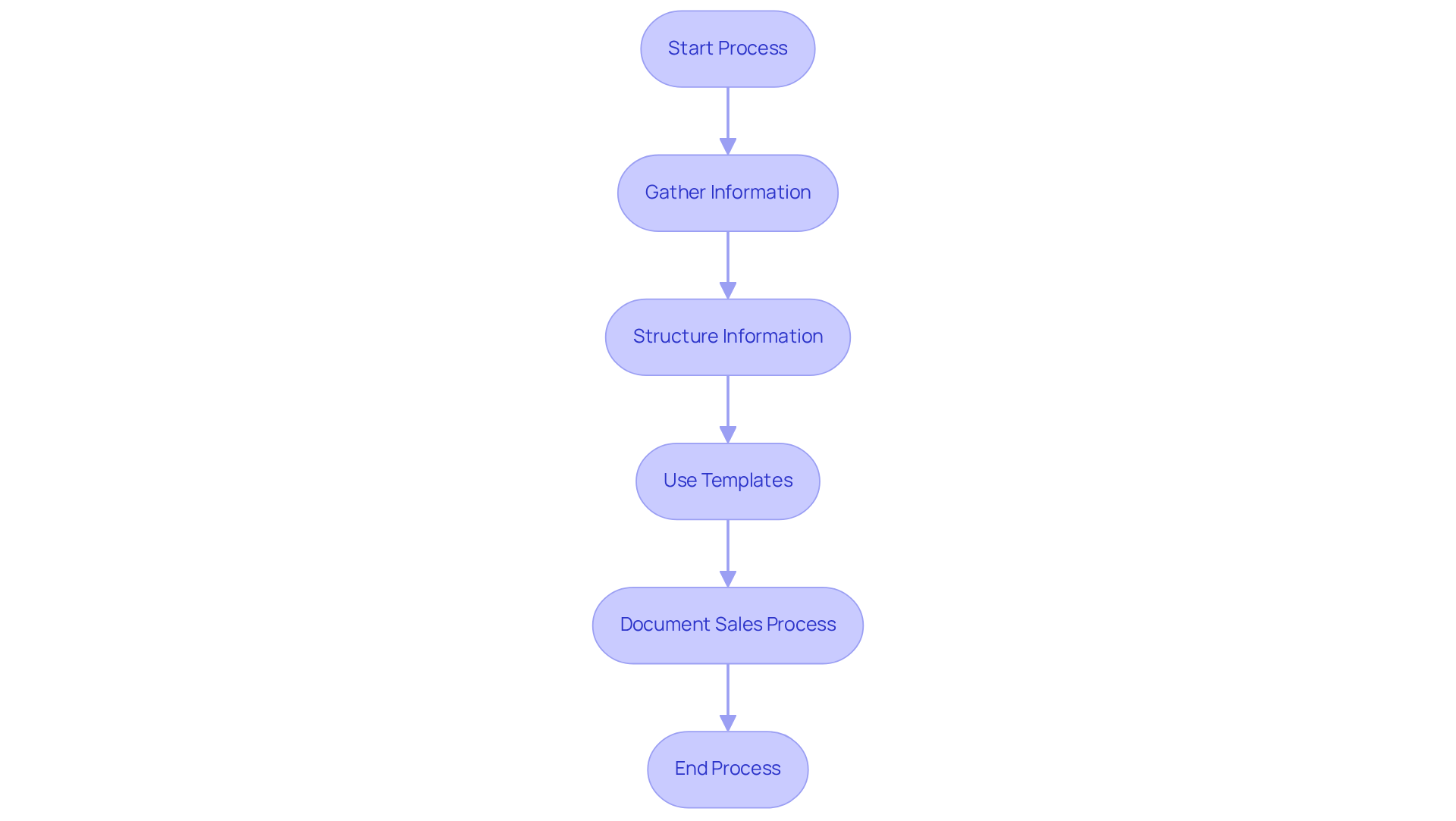
Review and Refine the Process Description
You might be wondering what the final step in the description of a process for documentation looks like. Well, it’s all about reviewing and improving the description! Share your draft with stakeholders involved in the process to gather their feedback and spot any gaps or inaccuracies. Encourage your team members to share insights from their experiences—this can lead to some really valuable improvements. Did you know that 43% of employees would think about leaving their job if their company didn’t have an efficient document access system? And it gets even more interesting among younger employees: 51% of those aged 18-34 and 57% of those aged 35-44 feel the same way! This really highlights just how crucial efficient record-keeping is for keeping talent around.
Now, after you’ve integrated that feedback, it’s time for a final review. Make sure your materials are clear, concise, and free of jargon. For example, if you’re targeting new employees, use straightforward language and provide definitions for any technical terms. It’s also a good idea to consistently review and refresh your records to capture any changes in the description of a process, ensuring it remains a reliable resource for your team.
Let’s not forget that document-related issues can cause a 21.3% drop in productivity, which emphasizes the need for ongoing improvements in record-keeping practices. By taking this proactive approach, you’re not just enhancing the quality of your documentation; you’re also fostering a culture of continuous improvement that can lead to greater operational efficiency. So, what are you waiting for? Let’s dive into making those documents work for you!
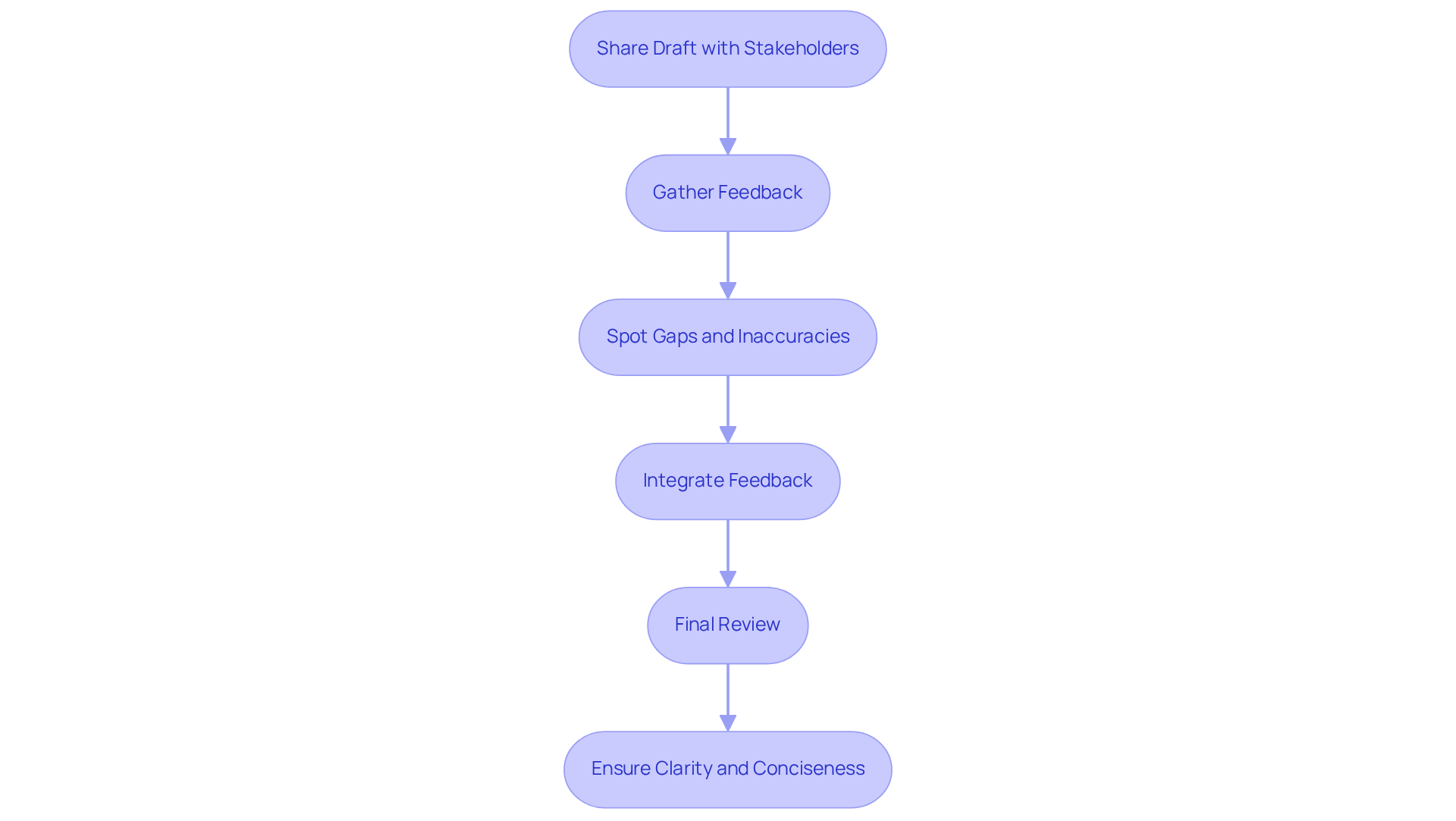
Conclusion
Creating a clear description of a process is super important for organizations looking to boost efficiency and streamline operations. You might be wondering how this works—well, by meticulously documenting procedures, teams can cultivate a culture of transparency that reduces misunderstandings and enhances compliance. This structured approach not only helps with onboarding new employees but also empowers organizations to spot inefficiencies and make effective changes, ultimately driving productivity and saving money.
Throughout this article, we’ve highlighted some key steps for effective process documentation. From grasping the importance of documentation to pinpointing critical processes, gathering detailed information, organizing it clearly, and then reviewing and refining those descriptions, each step is crucial in crafting a comprehensive framework. Just look at organizations like ATS Industrial Automation and Lockheed Martin—they showcase the real benefits of diligent process documentation, with significant boosts in productivity and cost savings.
So, what’s the takeaway? It’s clear that organizations need to prioritize effective documentation practices if they want to thrive in a competitive landscape. Embracing these strategies not only amps up operational performance but also enhances employee satisfaction and retention. By committing to continuous improvement in documentation processes, businesses can create an environment that values clarity, efficiency, and accountability, leading to lasting success. Now, doesn’t that sound like a win-win?
Frequently Asked Questions
Why is process documentation important for organizations?
Process documentation is crucial for organizations as it creates a clear structure of tasks, roles, and responsibilities, reducing misunderstandings, improving compliance, and facilitating training for new employees.
How can well-organized records benefit an organization?
Well-organized records can help organizations identify inefficiencies, enhance operational efficiency, and lead to significant financial savings, as illustrated by examples such as ATS Industrial Automation reducing downtime by 60% and Lockheed Martin saving nearly $1 million through efficient record-keeping.
What are some examples of organizations that benefited from process documentation?
ATS Industrial Automation improved productivity by reducing downtime by 60%, Lockheed Martin saved nearly $1 million in material investments, and Electric Boat Corporation lowered steam expenses by 51% and total energy usage by 10%.
What challenges do organizations face in maintaining effective documentation?
Organizations often struggle with ensuring that documentation is kept up-to-date and accessible, which can hinder the realization of the benefits associated with effective record-keeping.
How can an organization identify which processes to document?
Organizations can identify processes to document by evaluating critical operations based on their frequency, complexity, and impact on overall performance, while also involving team members for insights.
What impact does effective onboarding documentation have on new employees?
Providing a description of the onboarding process can enhance efficiency, reduce training time, and improve the experience for new hires, as many newcomers feel overwhelmed with information during onboarding.
Why is the alignment of documentation methods with organizational goals important?
Aligning documentation methods with organizational goals ensures that the record-keeping efforts address current challenges and maximize the benefits of the documentation process.
What is the financial impact of poor onboarding?
Poor onboarding can have significant financial implications, as replacing an employee can cost up to four times their annual salary, highlighting the importance of thorough documentation in the onboarding process.
👍
What others are liking
5 Steps to outline your ideal documentation structure
5 MINS READ
Where to start the your journey of mapping out your ideal documentation structure, aligning it with the very heartbeat of your organization?
Defining a winning level of detail in your process
3 MINS READ
What is too much detail, and what is too little? This article described in that winning level detail about what detail is enough.





